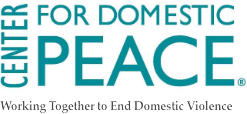Resources for the Marin CCR
Coordinated Community Response to Domestic Violence and Sexual Assault Network Resources
C4DP offers trainings on how agencies and groups can respond better to domestic violence. Learn more about our trainings of the DV Response Protocols That Save Lives by clicking here to download a flyer.
Click here to see Directory of Marin County services for domestic violence and sexual assault victims and their families.
Click here to order C4DP brochures, flyers, Sticker Stall post-its, and more!
Click here for social media resources to share.
Meeting Agendas and Minutes:
CCR to DV and SA Meeting Minutes 12.13.23
CCR to DV and SA Agenda 12.13.23
CCR to DV and SA Meeting Minutes 6.14.23
CCR to DV and SA Agenda 6.14.23
CCR to DV and SA Meeting Minutes 12.14.22
CCR to DV and SA Agenda 12.14.22
CCR to DV and SA Meeting Minutes 6.8.22
CCR to DV and SA Agenda 6.8.22
CCR to DV and SA Meeting Minutes 12.8.21
CCR to DV and SA Agenda 12.8.21
CCR to DV and SA Agenda 6.9.21
CCR to DV and SA Agenda 12.9.20
CCR to DV and SA Agenda 06.10.20
CCR to DV and SA Agenda 12.11.19
CCR to DV and SA Agenda June 2019
CCR to DV and SA Minutes_June_2018
CCR Annual Report for 15 Anniversary
CCR to DV Network – 15 Year Anniversary Flyer_9 11 13
CCR Meeting 6.12.13 Coercive Control PPT
CCR Meeting 6.12.13. Rapid Risk Assessment PPT (RAP)
Executive Summary Results – CCR to DV Network Survey
Governance Enhancements Handout.pdf
On September 14, 2011 at the Marin County Civic Center, the first public meeting of the Coordinated Community Response to Domestic Violence Network (CCR to DV Network) was held. Here is information from that meeting.
Meeting Summary for September 14th Event.pdf
Joint Session Imput.pdf
On May 24 – May 26, 2011, Center for Domestic Peace hosted a two-part training: “How to Analyze our Community Response to Domestic Violence” for government departments and agencies and “Implementing the Blueprint for Safety in Marin County” for criminal justice representatives.
TRAINING RECOURCES
“How to Analyze Our Community Response to Domestic Violence” Training Materials presented by Graham Barnes, Training Leader for the Domestic Abuse Intervention Project (DAIP).
The Big Picture: Changing our Community’s Tolerance for Domestic Violence
The many steps of institutional actions; defining the Duluth model for a coordinated community response; identifying our community’s stages of development.The Big Picture.pdf
Part 1: How we are Influenced by Theories and Concepts
How victim safety, autonomy and offender accountability are shaped by underlying assumptions; building a shared understanding through inclusive process.
Part 2: Redefining our Practices through Shared Understanding of the Least Powerful Victim-Centered practices that assess for risk and lethality by culture, circumstance, and offenders. How we are Influenced by Theories and Concepts.pdf
Effectively Tracking Problems and Improving Procedures
Building victim safety & offender accountability into every case-processing step.
Effecitively Tracking Problmes and Improving Procedures.pdf
Responding to Complex Problems: Women Who Use Violence
• New ways to address problems created by long-held beliefs and practices.
• Building effective working groups that span disciplines and cultures.
• Implementing system changes that are developed and owned by practitioners.
Responding to Complex Problems.pdf
Strengthening Our Network
Understanding and working with resistance; more effectively confronting our systems problems. Strengthening Our Network.pdf
How We are Organized to do Our Jobs
Eight methods to better organize our work; differentiating between systemic and individual issues. How We Are Organized to do our Jobs.pdf
Working with Men Who Batter
• Structuring batterer program accountability into our network.
• Engaging offenders in dialogue and critical thinking.
Working With Men Who Batter.pdf
Putting it All Together: Next Steps
Identifying working groups, timelines, and how we evaluate progress. Putting it All Together – CCR Problem Solving Worksheet.pdf
“Implementing the Blueprint for Safety in Marin County” Training Materials presented by Marcus Bruning, St. Louis County Sheriff’s Department and Jim Henderson, Battered Women’s Justice Project:
911 Dispatch Protocol, Blueprint for Safety
• Using a domestic violence specialist approach to collecting information.
• Making accountability information accessible and actionable.
911 Dispatch Protocol.ppt
Changing Roles of Law Enforcement
• How law enforcement practices shape the coordinated community response effectiveness.
• Addressing dominant aggressor, self-defense and victim blaming through policy.
• Effective leadership to change the culture of law enforcement.
Changing Roles of Law Enforcement.ppt
ccr_to_dv_network_minutes_june_2018_v2.pdf
ccr_to_dv_network_agenda_june_2018.pdf
dv_response_protocols_that_save_lives.pdf
ccr_to_dv_network_agenda_december_2017.pdf
ccr_annual_1516_report_.pdf
ccr_to_dv_network_minutes_121416.pdf
ccr_to_dv_network_agenda_june_2017.pdf
ccr_to_dv_network_minutes_060816.pdf
ccr_annual_2013_2015_report.pdf
ccr_to_dv_network_minutes_031616.pdf
ccr_to_dv_network_minutes_12_16_15.pdf
